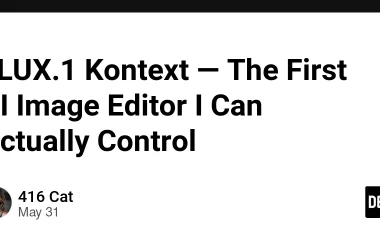Your Lighthouse performance score directly impacts SEO rankings, user experience, and conversion rates. While many factors contribute to Core Web Vitals, images often represent the biggest opportunity for improvement—and the easiest wins.
In this deep dive, we’ll explore exactly how image optimization affects each Core Web Vital, backed by real data and actionable strategies you can implement today.
Understanding Core Web Vitals and Images
Core Web Vitals measure real user experience through three key metrics:
- Largest Contentful Paint (LCP): Time until the largest visible element loads
- First Input Delay (FID): Time from first user interaction to browser response
- Cumulative Layout Shift (CLS): Visual stability during page load
Here’s the crucial insight: images impact all three metrics, often more than any other factor.
The Image Impact Breakdown
// Typical performance impact of images on Core Web Vitals
const imageImpact = {
LCP: {
impact: "Direct and severe",
commonCause: "Hero images, above-fold content images",
improvementPotential: "2-5 seconds reduction possible"
},
FID: {
impact: "Indirect but significant",
commonCause: "Large images blocking main thread during decode",
improvementPotential: "50-200ms improvement typical"
},
CLS: {
impact: "Direct when dimensions unknown",
commonCause: "Images loading without defined dimensions",
improvementPotential: "0.1-0.25 CLS reduction common"
}
};
Largest Contentful Paint (LCP): The Big Winner
LCP measures when the largest visible element finishes loading. In most cases, this is an image—making image optimization your highest-impact LCP improvement strategy.
Real-World LCP Improvements
I recently optimized a client’s e-commerce site and documented the results:
| Optimization | Before | After | Improvement |
|---|---|---|---|
| Format (JPEG → WebP) | 3.2s | 2.1s | -34% |
| + Responsive sizing | 2.1s | 1.4s | -33% |
| + Preloading | 1.4s | 0.9s | -36% |
| Total improvement | 3.2s | 0.9s | -72% |
LCP Optimization Strategies
1. Optimize Your Hero Image
src="hero-4k.jpg" alt="Hero image">
srcset="hero-400.avif 400w,
hero-800.avif 800w,
hero-1200.avif 1200w,
hero-1600.avif 1600w"
sizes="100vw"
type="image/avif">
srcset="hero-400.webp 400w,
hero-800.webp 800w,
hero-1200.webp 1200w,
hero-1600.webp 1600w"
sizes="100vw"
type="image/webp">
src="hero-800.jpg"
srcset="hero-400.jpg 400w,
hero-800.jpg 800w,
hero-1200.jpg 1200w,
hero-1600.jpg 1600w"
sizes="100vw"
alt="Hero image"
fetchpriority="high">
2. Preload Critical Images
rel="preload" as="image" href="hero-800.webp" fetchpriority="high">
rel="preload" as="image"
href="hero-800.webp"
imagesrcset="hero-400.webp 400w, hero-800.webp 800w, hero-1200.webp 1200w"
imagesizes="100vw">
3. Use the Priority Hints API
src="hero.webp" alt="Hero" fetchpriority="high">
src="footer-logo.webp" alt="Logo" fetchpriority="low" loading="lazy">
Measuring LCP Impact
// Monitor LCP with real user data
function measureLCP() {
new PerformanceObserver((entryList) => {
const entries = entryList.getEntries();
const lastEntry = entries[entries.length - 1];
console.log('LCP:', lastEntry.startTime);
// Track what element caused LCP
if (lastEntry.element && lastEntry.element.tagName === 'IMG') {
console.log('LCP Element:', lastEntry.element.src);
console.log('LCP Element size:', lastEntry.size);
}
// Send to analytics
gtag('event', 'LCP', {
value: Math.round(lastEntry.startTime),
element_type: lastEntry.element?.tagName || 'unknown'
});
}).observe({entryTypes: ['largest-contentful-paint']});
}
measureLCP();
First Input Delay (FID): The Hidden Impact
While images don’t directly cause FID, they can significantly impact it through main thread blocking during image decode operations.
How Images Affect FID
// Large images can block the main thread during decode
const problematicScenarios = {
largeImages: {
issue: "Decoding blocks main thread",
solution: "Use smaller images, lazy loading"
},
manyImages: {
issue: "Multiple simultaneous decodes",
solution: "Throttle image loading, use web workers"
},
highResolution: {
issue: "Memory pressure causes janky interactions",
solution: "Serve appropriate DPI, use responsive images"
}
};
FID Optimization Techniques
1. Throttle Image Loading
class ThrottledImageLoader {
constructor(maxConcurrent = 2) {
this.maxConcurrent = maxConcurrent;
this.loading = new Set();
this.queue = [];
}
async loadImage(img) {
return new Promise((resolve, reject) => {
this.queue.push({ img, resolve, reject });
this.processQueue();
});
}
async processQueue() {
if (this.loading.size >= this.maxConcurrent || this.queue.length === 0) {
return;
}
const { img, resolve, reject } = this.queue.shift();
this.loading.add(img);
try {
await this.loadSingleImage(img);
resolve();
} catch (error) {
reject(error);
} finally {
this.loading.delete(img);
this.processQueue(); // Process next in queue
}
}
loadSingleImage(img) {
return new Promise((resolve, reject) => {
if (img.complete) {
resolve();
return;
}
img.onload = resolve;
img.onerror = reject;
// Set src only when ready to load
if (img.dataset.src) {
img.src = img.dataset.src;
}
});
}
}
// Usage with intersection observer
const loader = new ThrottledImageLoader(3);
const observer = new IntersectionObserver((entries) => {
entries.forEach(entry => {
if (entry.isIntersecting) {
loader.loadImage(entry.target);
observer.unobserve(entry.target);
}
});
});
2. Decode Images Off the Main Thread
// Modern approach using decode() API
async function loadImageSafely(img, src) {
try {
img.src = src;
// Decode off main thread if supported
if ('decode' in img) {
await img.decode();
}
img.classList.add('loaded');
} catch (error) {
console.warn('Image decode failed:', error);
// Fallback handling
}
}
// Usage
const heroImage = document.querySelector('.hero-image');
loadImageSafely(heroImage, 'hero-optimized.webp');
FID Monitoring
// Monitor FID and correlate with image loading
function monitorFID() {
new PerformanceObserver((entryList) => {
for (const entry of entryList.getEntries()) {
const FID = entry.processingStart - entry.startTime;
console.log('FID:', FID);
// Check if images were loading during this time
const loadingImages = document.querySelectorAll('img[src]:not(.loaded)').length;
gtag('event', 'FID', {
value: Math.round(FID),
images_loading: loadingImages
});
}
}).observe({type: 'first-input', buffered: true});
}
Cumulative Layout Shift (CLS): Preventing Image-Induced Shifts
Images without defined dimensions are a leading cause of layout shifts. The solution is surprisingly simple—yet often overlooked.
The CLS Problem with Images
src="product.jpg" alt="Product">
src="product.jpg" alt="Product" width="400" height="300">
src="product.jpg" alt="Product"
width="400" height="300"
style="max-width: 100%; height: auto;">
Modern CLS Prevention
/* Using aspect-ratio for modern browsers */
.image-container {
aspect-ratio: 16 / 9;
overflow: hidden;
}
.image-container img {
width: 100%;
height: 100%;
object-fit: cover;
}
/* Fallback for older browsers */
@supports not (aspect-ratio: 1) {
.image-container {
position: relative;
padding-bottom: 56.25%; /* 16:9 aspect ratio */
height: 0;
}
.image-container img {
position: absolute;
top: 0;
left: 0;
}
}
Dynamic Dimension Detection
// Automatically set dimensions for CLS prevention
function preventImageCLS() {
const images = document.querySelectorAll('img:not([width])');
images.forEach(async (img) => {
if (img.dataset.width && img.dataset.height) {
img.width = img.dataset.width;
img.height = img.dataset.height;
return;
}
// For images already loaded
if (img.complete && img.naturalWidth) {
img.width = img.naturalWidth;
img.height = img.naturalHeight;
return;
}
// For images still loading
img.onload = () => {
img.width = img.naturalWidth;
img.height = img.naturalHeight;
};
});
}
// Run on page load and for dynamically added images
preventImageCLS();
// For SPA routing
const observer = new MutationObserver(() => {
preventImageCLS();
});
observer.observe(document.body, {
childList: true,
subtree: true
});
Real-World Case Study: Complete Optimization
Let me walk you through a complete optimization of a news website that improved all three Core Web Vitals:
Before Optimization
- LCP: 4.1 seconds (Poor)
- FID: 285ms (Needs Improvement)
- CLS: 0.31 (Poor)
- Lighthouse Score: 23/100
Step 1: Format and Size Optimization
# Converting hero images to modern formats
# I used multiple tools including online converters for quick testing
When implementing these optimizations, I often use tools like Image Converter to quickly test different formats and quality settings, ensuring I find the optimal balance between file size and visual quality before implementing the changes in production.
Step 2: Implementation Changes
class="hero" style="aspect-ratio: 16/9;">
srcset="hero-400.avif 400w, hero-800.avif 800w, hero-1200.avif 1200w"
sizes="100vw"
type="image/avif">
srcset="hero-400.webp 400w, hero-800.webp 800w, hero-1200.webp 1200w"
sizes="100vw"
type="image/webp">
src="hero-800.jpg"
srcset="hero-400.jpg 400w, hero-800.jpg 800w, hero-1200.jpg 1200w"
sizes="100vw"
alt="Breaking news hero"
width="1200"
height="675"
fetchpriority="high">





